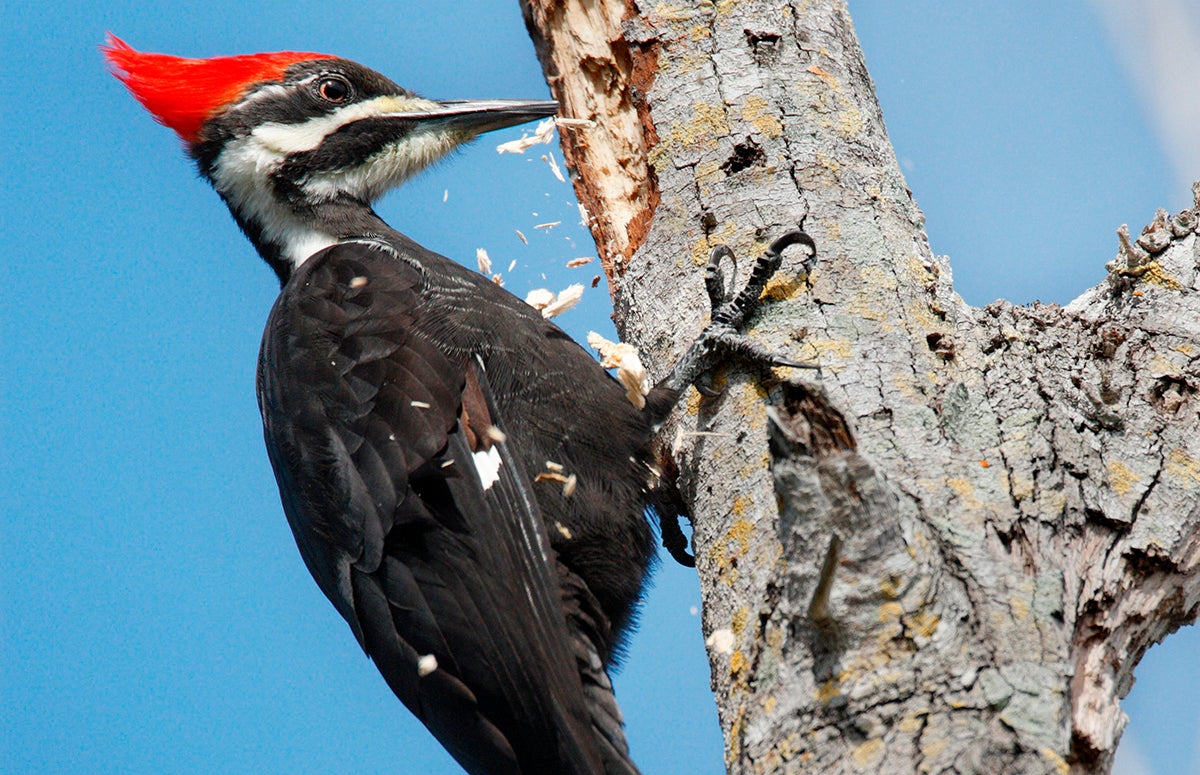Uncovering Woodpeckers in Florida: Variety Variety and Nature
Uncovering Woodpeckers in Florida: Variety Variety and Nature
Blog Article
Discover the Interesting World of Woodpeckers: Everything You Required to Know
The world of woodpeckers is a world filled with special behaviors, complex adjustments, and a diverse selection of species. From their environments and distribution patterns to their feeding routines and specialized physiological features, woodpeckers have actually long captivated the rate of interest of ornithologists and nature fanatics alike.
Woodpecker Habitats and Distribution
Woodpeckers populate a varied array of settings worldwide, showcasing adaptability in their distribution patterns. These durable birds are discovered in woodlands, forests, savannas, and deserts throughout numerous continents, showing their capacity to thrive in different climatic conditions. In North America, for instance, woodpeckers can be found in both coniferous and deciduous forests, utilizing their strong beaks to forage for insects and create nesting cavities in trees. Similarly, in Africa, specific woodpecker species have adapted to arid settings, such as the acacia woodlands, where they play an essential role in controlling insect populations.
:max_bytes(150000):strip_icc()/GettyImages-1094628502-a831e9c1be004c05b057f488ff819127.jpg)
Feeding Behaviors and Diet Regimen
Woodpeckers use their solid beaks to pierce right into the bark of trees, penetrating for bugs and larvae hidden below the surface. In enhancement to pests, woodpeckers additionally take in nuts, seeds, fruits, and sap.
Woodpeckers are understood for their drumming habits, which serves not just to connect with various other woodpeckers however also to locate food. The quick drumming audio is produced by the bird pecking on resonant surfaces like dead trees or steel poles. This behavior can bring in pests hidden in the wood, permitting the woodpecker to identify their existence and feed upon them.
Distinct Adjustments for Tree Climbing
In their experienced pursuit of bugs hidden within tree bark, woodpeckers have actually advanced remarkable anatomical functions that outfit them with one-of-a-kind adaptations for efficient tree climbing. Woodpeckers have strong neck muscle mass and a special head framework that soak up the impact of constant pecking, allowing them to climb vertically without causing harm to their brains. These adaptations showcase the amazing evolutionary style that allows woodpeckers to browse trees with accuracy and effectiveness.
Diverse Woodpecker Types Worldwide
With over 200 various types spread out across different habitats worldwide, the household of Picidae includes an exceptional diversity of woodpeckers. These birds can be discovered in forests, woodlands, savannas, and even urban locations, showcasing their flexibility to various settings. From the famous Northern Flicker in North America to the vibrant and elusive Crimson-backed Flameback in Asia, each woodpecker species shows distinct qualities in regards to tuft, actions, and habitat preference.
Woodpeckers vary substantially in dimension, with the diminutive Downy Woodpecker gauging around 6-7 inches in size, while the effective Lineated Woodpecker can reach up to 17 inches - Woodpeckers in Florida. Their beaks also can be found in various forms and sizes, reflecting their feeding behaviors. Some types focus on extracting pests from tree bark, like the Acorn Woodpecker, while others, such as the Black-cheeked site here Woodpecker, prey on fruits and seeds

Conservation Efforts and Obstacles
Conservation initiatives for woodpecker populations are important in mitigating the impact of habitat loss and various other hazards encountering these diverse avian species. Woodpeckers deal with different obstacles to their survival, largely due to deforestation, urbanization, climate modification, and invasive varieties. To address these issues, preservation efforts focus on safeguarding and bring back woodpecker habitats, executing sustainable forestry methods, and increasing understanding regarding the value of these birds in environments.
One substantial obstacle in woodpecker preservation is visit here the fragmentation of their habitats, resulting in isolated populations that are more vulnerable to termination - Woodpeckers in Florida. Conservationists function to develop wild animals passages and safeguarded areas that connect these fragmented environments, permitting woodpeckers to relocate between different locations for feeding, reproducing, and shelter

Final Thought
In verdict, woodpeckers are remarkable birds with one-of-a-kind adjustments for tree climbing official website and feeding actions. More study and preservation actions are needed to ensure the survival of woodpeckers in the wild.
Report this page